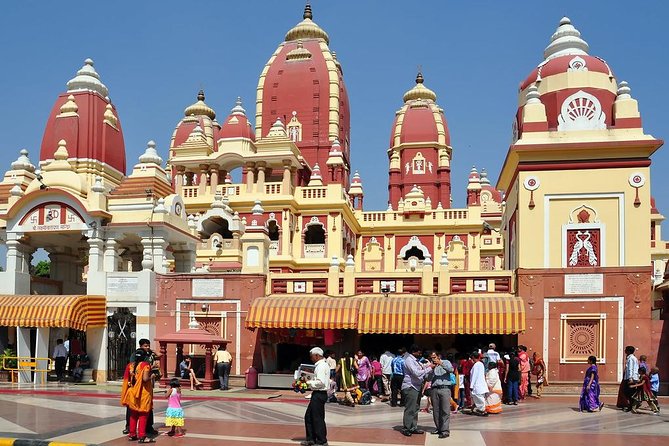Thailand, the land of smiles, is known for its rich history, vibrant culture, stunning landscapes, and flavorful cuisine. From the bustling city of Bangkok to the tranquil beaches of Phuket, the country offers a diverse range of experiences that cater to all types of travelers. This Southeast Asian gem is a popular destination among globetrotters worldwide, thanks to its affordability and the warmth of its people. However, if you’re looking to make the most out of your budget without compromising the quality of your travel experience, timing your visit can make a significant difference. So, when is the cheapest time to visit this tropical paradise? Let’s delve into the details to provide you with a comprehensive guide to planning your affordable dream vacation in Thailand.
Understanding the Seasons in Thailand
In Thailand, the climate is generally divided into three distinct seasons: hot, cool, and rainy.
The Hot Season
The hot season, spanning from March to June, is characterized by soaring temperatures. During this time, tourists often flock to the islands and beaches to cool off.
The Cool Season
The cool season, from November to February, offers pleasant weather, making it a popular time for tourists. However, due to the influx of visitors, prices tend to be higher.
The Rainy Season
The rainy season, from July to October, is when the country experiences monsoons. While the weather can be unpredictable, the lush landscapes and waterfalls are at their peak during this time.
The Cheapest Time to Visit
Off-Peak Season
Generally, the cheapest time to visit Thailand is during the rainy season, specifically between May and October. This is considered the off-peak season when the prices for flights and accommodations are relatively lower.
The advantages of visiting during off-peak season
Traveling during this time not only saves you money but also offers unique experiences. You can enjoy less crowded attractions, vibrant festivals, and the country’s natural beauty in full bloom.
The disadvantages of visiting during off-peak season
However, there are some drawbacks. The weather can be unpredictable, and some attractions might be closed due to heavy rain.
How to find cheap flights
Keep an eye on flight booking websites and subscribe to their newsletters for updates on discounts and promotional fares.
Accommodation rates
Similarly, accommodations tend to be cheaper during the off-peak season. Consider staying in guesthouses or budget hotels to save even more.
Experiences for Budget Travelers
Affordable Attractions in Thailand
Despite being a popular tourist destination, Thailand offers many free or affordable attractions, like exploring the bustling local markets or visiting ancient temples.
Cheap yet delicious street food
One of the best ways to experience Thailand on a budget is to experience its authentic street food culture. Thailand, particularly Bangkok, is filled with a variety of street food stalls that are loved by locals and tourists alike for their affordability and tantalizing flavors from fiery papaya salad to rich and creamy Khao Soi, the street food scene in Thailand is a gastronomic adventure that won’t break the bank. Here are some must-try dishes that are not just affordable, but deliciously satisfying:
1. Papaya Salad: Also known as ‘Som Tum,’ this dish is made from shredded green papaya combined with lime juice, dried shrimp, tomatoes, garlic, peanuts, fish sauce, and palm sugar. Despite its seemingly innocent name, it’s a dish for spice lovers, with its generous addition of bird’s eye chilies.
2. Larb: Originally from Laos, Larb is a sour-spicy dish filled with the freshness of mint, lemongrass, and cilantro. It comes in various varieties, including pork, chicken, or tofu, and it’s an absolute must-try for all, including vegetarians.
3. Khao Soi: A staple of northern Thai cuisine, Khao Soi is a rich coconut curry broth with tender egg noodles, topped with crispy fried egg noodles, pickled mustard greens, chili oil, and shallots. A bowl of this delectable soup will cost you only around $1.
4. Pad Kra Pao: This simple, quick, and fiery basil stir fry is a street-food staple. Made with basil, fish sauce, chilies, and garlic, along with long beans and ground meat (usually pork), it’s an explosion of flavors in every bite.
5. Yen Ta Fo: This sour and sweet seafood noodle soup is easily recognizable by its vibrant pink color. It’s a unique combination of squid balls, fish cakes, and seafood balls, with the optional addition of steamed cubes of blood, known for their rich iron content.
6. Isaan Sausage: Found grilling along sidewalks or in night market stands, Isaan sausages are a must-try. The sour flavor comes from aging the pork, which is then combined with rice vermicelli and served on a stick.
7. Snacks on a Stick: You’ll find various snacks on a stick sold on almost any street corner. From hot dogs to tiny cocktail sausages wrapped in fried wontons, tofu cubes, and seafood patties, these snacks are perfect for on-the-go munching, and most sticks cost around $0.30.
8. Durian: Known as the ‘King of Fruits,’ the durian is infamous for its strong smell, but it’s loved by many for its delicate, savory, creamy custard taste. A heaping pile of durian will set you back around $4.
Public transportation options
Navigating through Thailand is relatively easy and affordable with its efficient public transportation system. Options include the BTS Skytrain in Bangkok, songthaews (shared taxis), tuk-tuks, local buses, and ferries for island-hopping.
Additional Tips to Save Money
Booking Ahead
To get the best deals on accommodations and flights, consider booking well ahead of your travel dates. Many websites offer early-bird discounts.
Bargaining at local markets
Bargaining is quite common in Thailand, especially in local markets. Don’t be shy to negotiate the price, on items that catch your interest. Remember to start by offering around 30-40% below the asking price, act nonchalant, use the walk-away technique when needed, and be prepared for counteroffers. Always be respectful and friendly during the negotiation process, and don’t be in a hurry, especially for bigger purchases.
When it comes to transportation, even locals have to bargain for a fair price with taxis and tuk-tuks. One good practice is to ask a local or your hotel about how much you should expect to pay for a trip to a particular destination. Always be prepared to negotiate and walk away if the price offered is too high.
In terms of tours, you might be able to negotiate a lower price if you’re traveling with a group or are willing to skip some parts of the tour. Make sure to discuss this with the guide beforehand.
Bargaining for accommodation provides fewer possibilities, especially if you’re booking online from home and staying for a night or two. However, if you plan on staying for an extended period, you might be able to negotiate a better deal. Building a good relationship with the owner or manager could also help you receive additional perks.
Utilizing local SIM cards
Getting a local SIM card can help you save on data and call costs. There are several providers in Thailand, and their SIM cards are widely available at convenience stores or mobile phone shops.
Conclusion
Thailand is a destination that offers a rich cultural experience, stunning landscapes, mouth-watering cuisine, and yes, an affordable vacation if you plan it right. From visiting during the off-peak season to enjoying cheap yet delicious street food and haggling your way through markets, there are numerous ways to make the most of your trip without breaking the bank.
FAQs
Q1: What is the cheapest time to visit Thailand?
The cheapest time to visit Thailand is during the rainy season, specifically between May and October. This is when the prices for flights and accommodations are typically lower.
Q2: What are some cheap yet delicious street foods in Thailand?
Some must-try street foods in Thailand include Papaya Salad, Larb, Khao Soi, Pad Kra Pao, Yen Ta Fo, Isaan Sausage, and Durian.
Q3: Can I bargain in Thailand?
Yes, bargaining is a common practice in Thailand, especially in local markets and for transportation. Always be respectful and friendly during the negotiation process.
Q4: How can I save on tours in Thailand?
You might be able to negotiate a lower price if you’re traveling with a group or are willing to skip some parts of the tour.
Q5: What is the weather like in Thailand during the off-peak season?
The off-peak season falls during the rainy season. The weather can be unpredictable with occasional downpours, but the landscapes and waterfalls are at their peak during this time.
Q6: Are there any free or cheap attractions in Thailand?
Yes, Thailand offers many free or affordable attractions like exploring the bustling local markets or visiting ancient temples.
Q7: Can I get a local SIM card in Thailand?
Yes, local SIM cards are widely available at convenience stores or mobile phone shops in Thailand.
Q8. Can I save money on accommodation in Thailand?
Yes, if you plan on staying for an extended period, you might be able to negotiate a better deal. Also, accommodations tend to be cheaper during the off-peak season.
Q9: What are the seasons in Thailand?
Thailand is inherent in humid subtropical and tropical climates, with an average annual temperature of around 30 degrees. The country experiences three main seasons. The hot season occurs from March to May, with an average temperature ranging between 29-38 degrees. The rainy season is from June to October, with many sunny days and short rains, and the temperature is about 26-32 degrees. Finally, the dry season occurs from November to February, with the temperature averages from 19 to 30 degrees. Overall, the climate of Thailand throughout the year is steadily hot.
Q10: What are some tips for bargaining in Thailand?
Start by offering around 30-40% below the asking price, act nonchalant, and use the walk-away technique when needed. Be prepared for counteroffers and always be respectful and friendly during the negotiation process. For bigger purchases, choose a time when the salesperson isn’t busy, like close to the end of their opening hours. Also, remember to dress like a local and try to build a friendly connection with the seller.
Now, you are well-informed about the cheapest time to visit Thailand, and you can plan a budget-friendly trip that allows you to fully experience the beauty and culture of this amazing country. Happy Travels!



